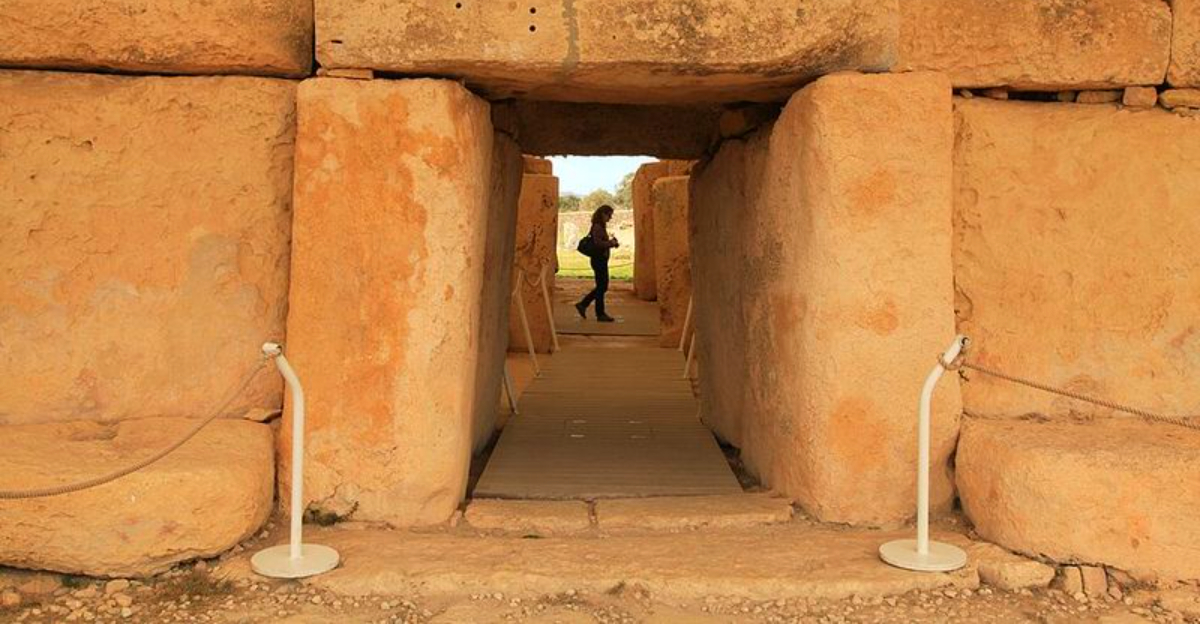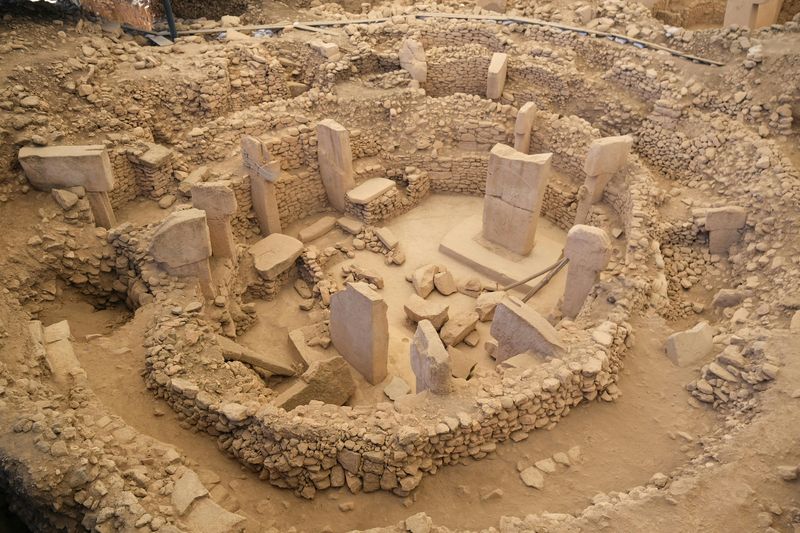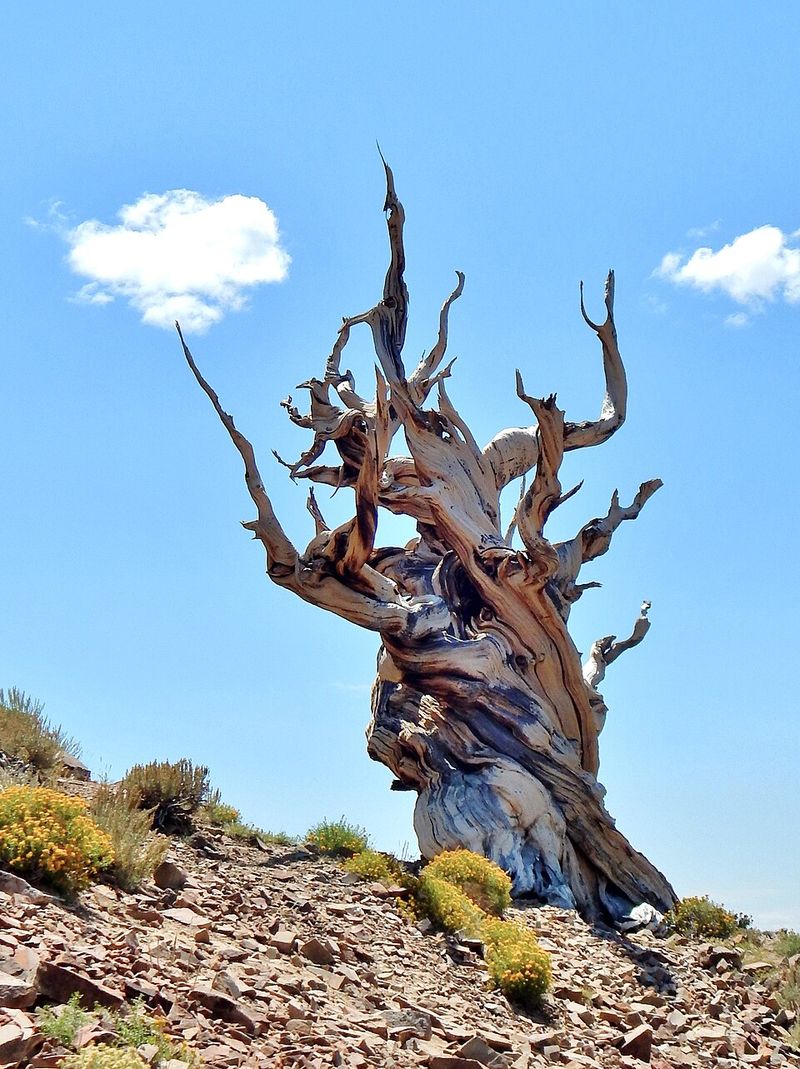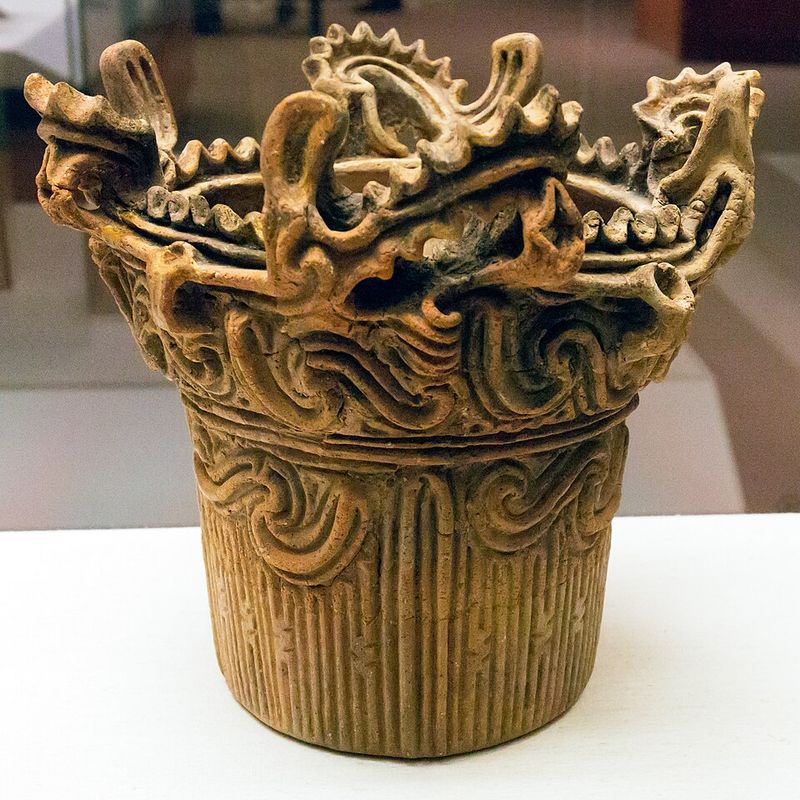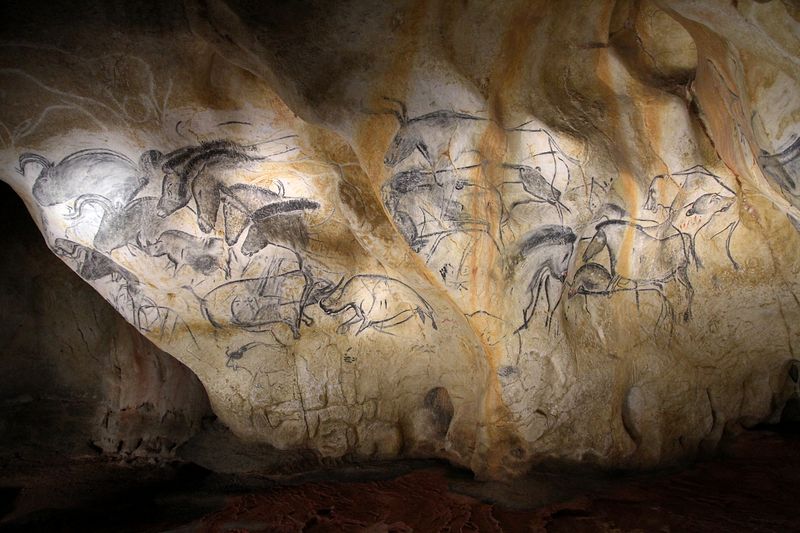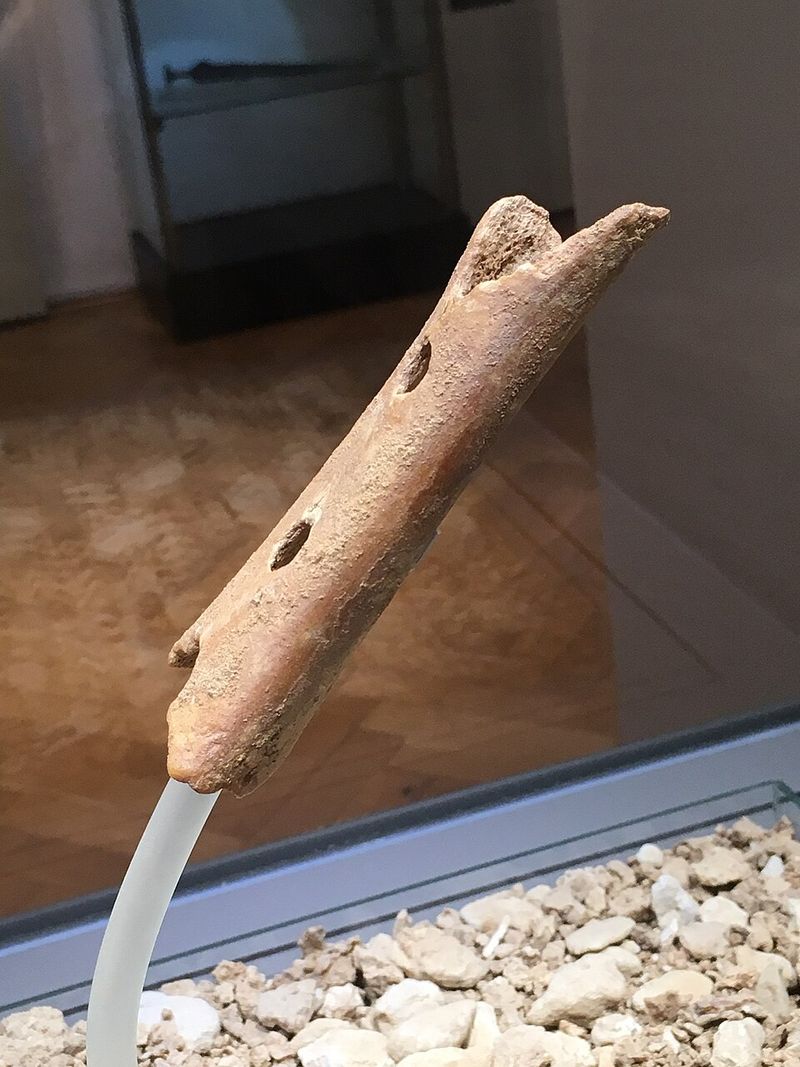Think the pyramids are the ultimate benchmark of ancient wonder? Think again. Across the world, astonishing artifacts, artworks, living organisms, and stone-built marvels predate Egypt’s tallest tombs by centuries, millennia, and even geologic ages. From Ice Age art to trees older than recorded history, these survivors challenge what we think we know about human ingenuity and nature’s endurance. Dive in and discover 12 incredible things that stood the test of time long before the pharaohs raised their monuments.
1. Göbekli Tepe 11,000 Years Old
Rising from a Turkish hilltop, Göbekli Tepe rewrites the story of civilization. Built around 9600 BCE by hunter-gatherers, its monumental T-shaped pillars, some weighing 20 tons, form circular sanctuaries adorned with foxes, boars, and birds in high relief. This site predates pottery, agriculture, and writing, yet demonstrates masterful planning and stoneworking without metal tools. Archaeologists believe it served as a ceremonial complex, perhaps fostering social cohesion that later enabled farming. Its deliberate burial preserved carvings with uncanny freshness. Older than Stonehenge and the pyramids, Göbekli Tepe stands as the earliest known monumental architecture—and a humbling feat of prehistoric ambition.
2. The 12,000 Year Old Cave Paintings of Lascaux
Deep in southwestern France, Lascaux’s painted chambers dazzle with charging bulls, lithe horses, and agile deer. Created around 17,000 years ago, these works predate the pyramids by over twelve millennia, yet display perspective, shading, and movement. Artists used mineral pigments, blowing techniques, and scaffolding to reach high vaults. Over 600 paintings and thousands of engravings cover the walls, including the famous Great Hall of the Bulls. Sealed to protect fragile pigments, the original cave remains closed; faithful replicas preserve the experience. Lascaux reminds us that Ice Age minds were deeply creative, symbolic, and technically sophisticated.
3. The Ancient Bristlecone Pine Trees 4,800 Plus Years Old
High in California’s White Mountains, gnarled bristlecone pines endure brutal winds, thin soils, and freezing nights. The famed Methuselah tree surpasses 4,800 years, older than the pyramids and still alive. These trees grow slowly, with dense resinous wood that resists rot and insects. Dead wood can remain on the tree for millennia, preserving a continuous environmental archive. Their battered forms tell stories of droughts and ice advances. Scientists keep exact locations secret to protect them from vandalism. Bristlecones are Earth’s oldest known non-clonal trees, living testaments to patience, resilience, and the long memory of landscapes.
4. The Jomon Pottery of Japan 14,000 Plus Years Old
Japan’s Jomon culture produced some of the world’s earliest pottery, with pieces dating to as early as 14,000 BCE—long before pyramids or widespread farming. Far from crude, many vessels feature flamboyant rims, cord-marked textures, and complex motifs. These pots reflect settled or semi-sedentary hunter-gatherers who cooked, stored food, and expressed identity through ceramics. Clay technology spread unevenly across prehistory, and Jomon artisans mastered firing and decoration with remarkable flair. Their works challenge assumptions that pottery arises only with agriculture. Holding a Jomon shard is like touching the dawn of design: practical, expressive, and astonishingly early.
5. The Megalithic Temples of Malta 3600–2500 BCE
On Malta’s sunlit limestone ridges, temples like Ħaġar Qim and Mnajdra rise from the rock, older than Stonehenge and the pyramids. Built between 3600 and 2500 BCE, they feature precision-cut blocks, curving apses, and altars aligned to celestial events. Mnajdra’s doorway frames the equinox sunrise with striking accuracy. Intricate reliefs of spirals and plants adorn interior slabs. These freestanding stone structures required complex logistics, communal effort, and architectural skill. Excavations reveal ritual activity and offerings. Weathered by sea winds yet still standing, Malta’s temples embody a surprisingly advanced Neolithic worldview tied to seasons, fertility, and sky.
6. The Pleistocene Ice Age Lions of Chauvet Cave 30,000 Plus Years Old
Chauvet Cave in France shelters some of the oldest known figurative artworks, dating to around 30,000 to 32,000 years ago. The panels of cave lions, rhinoceroses, and horses show shading, perspective, and motion lines that feel modern. Created when Neanderthals still lived in Europe, these scenes reveal a rich symbolic life among early Homo sapiens. Charcoal drawings, handprints, and paw prints share the same chambers. Radiocarbon dating and careful preservation confirm their antiquity. Chauvet’s lions prowl across the limestone in dynamic clusters, reminding us that storytelling, ritual, and art flourished long before recorded history.
7. The Ancient Australian Boab Trees 1,500 to 2,000 Plus Years Old
Western Australia’s boab trees stand like time-gnarled sentinels, their swollen trunks storing water through harsh seasons. Some boabs are believed to approach two millennia in age, with many predating the pyramids. Aboriginal communities have cultural and practical ties to these trees, using seeds, leaves, and fibrous bark. Hollow trunks sometimes served as storerooms or temporary shelters. Their bottle-like silhouettes dominate Kimberley landscapes, surviving fire and drought. Genetic ties link them to African baobabs, hinting at ancient dispersal. Though not the oldest trees, boabs are among the most charismatic long-lived flowering species still shaping human experience.
8. Stonehenge’s First Stage 3100 BCE
Long before its iconic sarsen circle, Stonehenge began as an earthwork enclosure around 3100 BCE, predating the Great Pyramid by centuries. This earliest phase included a circular ditch and bank with timber posts and the enigmatic Aubrey Holes. Over the next millennium, builders added bluestones from Wales and mammoth sarsens, aligning with solstices to frame the sun’s path. The project spanned generations, revealing a society capable of coordinated labor and astronomical insight. Even the humble first stage shows careful planning and sacred intent. Stonehenge is a monument to time, built over time, about time.
9. The Oldest Known Musical Instrument 40,000 Plus Years Old
In Germany’s Swabian Jura caves, archaeologists found flutes carved from vulture wing bones and mammoth ivory, dating to roughly 40,000 years ago. These instruments prove that humans made organized music deep in prehistory. Crafting finger holes and tuning pitches required precision and acoustic understanding. Music likely bonded groups, coordinated rituals, and soothed infants, strengthening social cohesion. The flutes accompany stunning ivory figurines from the same cultural horizon, revealing a burst of creativity as modern humans spread into Europe. Close your eyes and imagine those first notes echoing through a limestone chamber, connecting listeners across vast time.
10. The Sahara’s Stone Circles 7,000 Years Old
Across Niger and the wider Sahara, megalithic stone circles and alignments date to roughly 5000–7000 BCE, when the region was greener and lakes dotted the desert. These monuments hint at organized societies tracking seasons and marking rituals. Some structures appear to align with solstices or star paths, suggesting early skywatchers recorded celestial rhythms. The stones vary from modest rings to complex clusters, often near ancient habitation sites. As the Sahara dried, communities shifted, but the stones remained, silent witnesses to vanished climates. Today they stand amid dunes, challenging assumptions that megalithic traditions were confined to Europe.
11. The Oldest Known Living Species Horseshoe Crabs 450 Million Years Old
Horseshoe crabs are living fossils, tracing their lineage back about 450 million years—before dinosaurs and even trees. Their armored domes and spiky tails belong to an ancient design that endured mass extinctions. Today they spawn en masse on beaches, fueling bird migrations. Their blue blood, rich in amebocytes, is used to test medical equipment for bacterial toxins. Conservation concerns arise from overharvesting and habitat loss, prompting biomedical alternatives and protections. Seeing a horseshoe crab scuttle ashore is witnessing deep time in motion, a resilient survivor bridging primordial seas and modern coasts.
12. The Great Zimbabwe Birds Carvings 11th Century CE Included for Comparison
Great Zimbabwe’s soapstone birds, carved between the 11th and 15th centuries CE, are iconic emblems of a powerful city-state in southern Africa. Often misrepresented as older than Egypt’s pyramids, they are not, but merit recognition for artistry and symbolism. The birds likely stood atop monoliths within the Hill Complex, reflecting royal authority and spiritual beliefs. Great Zimbabwe’s stone walls, built without mortar, testify to advanced engineering and trade networks. Including this example highlights how myths distort timelines, and why accurate dating matters. Respect grows when we celebrate each civilization’s true context and achievements.
